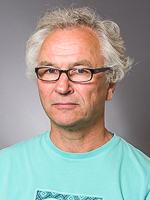Rare and ultra-rare diseases affect less than 1 in 2000 and 1 in 50,000 people, respectively, and they often have a genetic cause. Even though these diseases are individually rare, there are >300 million rare disease patients globally.
We analyze Whole Genome Sequencing (WGS) and RNA-sequencing (RNA-seq) data searching for novel pathogenic variants. Potential «novel disease genes», genes not yet known to cause human diseases when mutated, are shared through GeneMatcher.org to identify unrelated patients with overlapping phenotypes and pathogenic variants affecting the same gene.
We further explore the functional consequences of putative pathogenic variants by in vitro and in vivo modelling.
Our project reveals unique knowledge about the etiology of the diseases, which is crucial knowledge for the development of future therapy.
The research group is a part of Institute of Clinical Medicine, University of Oslo, and also the Research section at the Department of Medical Genetics, Oslo University Hospital.
Read more about our research on our website at Oslo University hospital
Research projects
Molecular characterization of encephalopathies with childhood onset
Severe encephalopathies of likely genetic origin are clinically heterogeneous with life-long morbidity. These diseases can be caused by pathogenic variants in genes involved in a wide range of cell physiological processes.
Our research the last >10 years have identified the disease-causing variant in about two-thirds of the families analyzed and documented the molecular cause of several novel disease entities.
Read more about the project on our website at Oslo University hospital.
Novel genes causing primary cilia dysfunction in congenital brain malformations
A primary cilium protrudes from the plasma membrane on nearly all cells in the human body where it senses the external environment and trigger appropriate cell responses. The primary cilium is necessary for a wide range of physiological processes already during embryonic life.
Our project characterizes the molecular basis of congenital brain anomalies caused by primary cilia dysfunction. In this project, we recruit patients who lack a molecular diagnosis after WGS-based diagnostic analyses.
Read more about the project on our website at Oslo University hospital.
Combined genomics and transcriptomics in rare neurometabolic disease research
We recently initiated a project to identify and characterize the disease etiology in patients with clinical symptoms of neurotransmitter disease. These disorders present predominantly with neurological features, including dystonic or dyskinetic cerebral palsy and movement disorders in general.
Read more about the project on our website at Oslo University hospital.
Studying the effect of the Stormorken syndrome causing mutation STIM1 R304W in mouse models
The only project without a focus on neurological diseases is our work on Stormorken syndrome (OMIM 185070). After we documented that the mutation STIM1 R304W causes this syndrome, we established and characterized mouse lines expressing the mutated protein. Our findings highlight the importance of STIM1 in the development and homeostasis of the skeleton and the skeletal muscle and motivates further studies into how STIM1 R304W affects dental epithelial cell fate in mice.
Read more about the project on our website at Oslo University hospital.
Externally Funded Projects
Our research projects have received funding from the Norwegian National Advisory Unit on Rare Disorders. We have also received funding for PhD-students through The Research Council of Norway's Quota scheme.



